The building of the Ambassador Bridge
By Patricia Zacharias
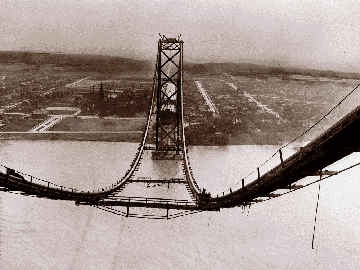
For the past 67 years, the Ambassador Bridge has served as a graceful link between Detroit and its neighbor, Windsor, Ontario, and as a weathered monument to the friendship and cooperation of two great nations. But the bridge itself was born not out of peace and cooperation but amid bitter squabbling between public and private interests over whether it should be built and who would build it.
The Detroit River and the Great Lakes it links were of enormous importance to industry and commerce since the early days of the fur trade. As British and French explorers opened up the region Detroit, settled first by the French, became the key to control of trade on the lakes. Forts Pontchartrain, Shelby and Wayne were built along what is now the American side of the river. Fort Malden near Amherstburg guarded what is now the Canadian side.
During the Revolutionary War, Detroit was the primary British outpost for raids on American colonials in New York, Illinois and Ohio, and once again was the key to control of the Great Lakes.
With the treaty of Paris, which marked the end of the war and recognized the independence of the fledgling United States, Detroit and the area surrounding it came under American control.
As settlement of the Detroit area and Ontario boomed during the 19th century the Detroit River took on even greater importance. Railroad magnates lobbied for an easy way to cross the river and were bitterly opposed by steamboat interests who wanted to protect their control of the waterways. Early proposals of drawbridges and winter-only crossings were successfully fought by the boat owners who insisted any kind of bridge would be a menace to nagivation.
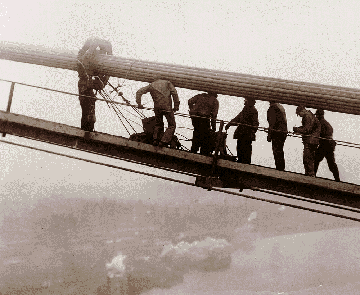
Battles raged on both sides of the river between politicians and merchants over where a bridge should be located.
In the midst of the boomtimes of the "Roaring Twenties," Joseph A. Bower, a former Detroiter who now headed a New York financial syndicate, was approached by James W. Austin, then head of Detroit Graphite Company. Austin wanted Bower to build a bridge over the Detroit River and he wanted a contract for his Detroit Gaphite Company to paint it.
Bower went to Congress and got a building franchise only to face a huge political hurdle in the form of Detroit Mayor John W. Smith. Mayor Smith wanted the cities of Detroit and Windsor to join in building a municipally owned bridge, even though such an arrangement was impossible due to charter limitations in both Detroit and Windsor.
Finally, with time running out on his congressional franchise, Bower had Austin's l6-year-old daughter, Helen, drive in the first spike of a bridge approach ramp at Jefferson and 2lst Street on May 7, l927. The next day, 50 workers started sinking test borings to determine the depth of the bedrock.
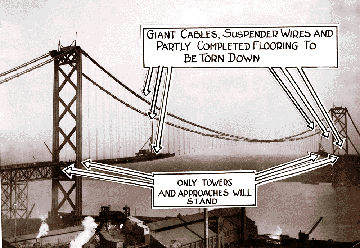
Bower correctly assumed that Congress would accept these moves as the beginnings of construction and buy him more time to battle Mayor Smith.
Then with the help of Detroit City Council President John C. Lodge and Detroit business leaders, Bower took his case to the voters of Detroit for approval of a bridge ordinance:
"As I interpret the Mayor's statement," Bower argued, "he is not in favor of a bridge being built by a private company. This matter has been under discussion for several years, and we recall conferences between Mayor Smith and Mayor Mitchell of Windsor, at which time, these gentlemen endeavored to find a way in which the municipalities could join in building an international bridge. At the end of their conferences, they were apparently as far from arranging for a bridge as when the discussions were begun."
The voters were swayed and the bridge ordinance passed . Full scale construction began on both sides of the river in August of 1927 and the bridge began inching across the waterway. But then new problems arose. In March 1929, construction was halted when faults were discovered in the steel wire of the bridge's two main cables. The Pittsburgh construction firm, McClintic-Marshall Company, had to dismantle the suspension cables and take down the roadway before construction would continue. Despite the delay, the bridge was completed nine months ahead of schedule.
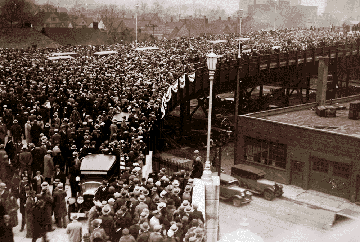
On Armistice Day, Nov. ll, l929, thousands of parading veterans joined a crowd of 60,000 for the dedication of the bridge. Days earlier, the stock market had suffered its worst losses and financial panic was in full bloom. But despite the ominous clouds, a burst of civic pride lifted the spirits of the crowd. After all, Detroit now boasted the longest suspension bridge span in the world -- l,850 feet.
President Herbert Hoover was the first choice as speaker at the dedication cxeremonies, but Hoover had been in Detroit only a few weeks earlier for the dedication of the Edison Institute in Dearborn and his advisers feared other states would accuse him of favoritism if he returned to Detroit so soon. Vice-President Charles Curtis also declined.
In desperation, the celebrants turned to Michigan Gov. Fred W. Green. He didn't disappoint the revelers. Gov. Green wound up with an eloquent oration addressed to the bridge:
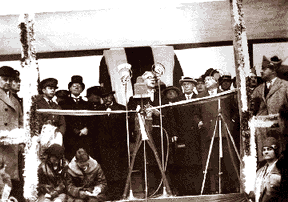
"May you endure for, aye, not only a work of material beauty and utility, but as a symbol of loveliness and usefulness. May you portray international confidence and the mutual honor of the nations whose territories, and whose people you bind together."
On the Canadian side of the bridge, Charles McCrae, Ontario Minister of Mines, expressed the hope that "the sun shall always set upon this connecting link between two great countries with their friendships firmly set and their goodwill warmly alive."
During construction of the bridge, it was referred to as the 'Detroit River Bridge'. Joseph Bower felt this was too impersonal. He turned down recommendations to have it named the 'Bower Bridge' and suggested instead, that it be called the 'Ambassador Bridge'.
Soon after the bridge opened, it became the site of numerous publicity stunts. In December of l929, Dottie Reed, niece of actor Wallace Reed, toe danced across the bridge. Swimmers and high divers announced plans to dive off the span but decided against it after measuring the depths and strengths of the river currents.
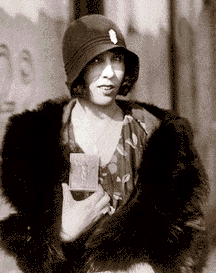
The bridge became a popular site for weddings, but marital bliss for many turned to panic when it was pointed out that the bridge was an international no-man's land and the weddings may not be valid.
In the early days, people were permitted to walk or ride bicycles across the structure. It soon became a popular spot to end a life. In 1930, a Canadian inspector became the first to jump to his death off the Ambassador Bridge. Over the years, many others would follow. Few survived the jump.
During Prohibition, rumrunners smuggled whiskey across the bridge to thirsty Detroiters but the bridge traffic was small potatoes compared to the smuggling on the river below.
During World War II, the bridge was guarded as a vital military transportation asset.
Fighting over ownership and control of the bridge continued for many years. In 1978, the Detroit International Bridge was merged with Central Cartage of Sterling Heights. The second busiest crossing along the country's northern border remains in private ownership. In 1981, after a campaign by the Central Business District Association and CBDA President, Diane Edgecomb, permanent year-round lights were added to the bridge. To the surprise of many, they found that the bridge had already been prepped for lighting during its earlier years.
Sixty seven years after its dedication, the inscription etched in identical tablets at each end of the bridge is still appropriate:
"The visible expression of friendship in the hearts of two peoples with like ideas and ideals."
